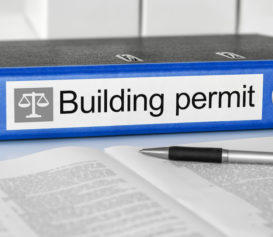We spoke with the team at Mark Hertz Company, an organization that specializes in NYC local law violations and DOB compliance. Here’s what they had to say about recent DOB-related trends, and common mistakes you’ll want to avoid:
Do you see any patterns in common compliance issues facing owners this year?
As with everything, it depends on where you look and the type of violations.
For example, for violations that the city can issue from their desks (i.e., remotely), such as letter grade violations or a failure to certify correction, there has certainly been a significant increase. On the other hand, for violations that require inspectors to visit the site, we estimate they are still down approximately 30% from 2019 month over month. We do expect that as the city continues to open up and things get back to more of what we call “normal” that we will see the number of violations being issued get back to what they were pre pandemic, and likely exceed it.
That said, on site visits are increasing. As you’ve probably seen, in response to the recent deaths of 3 construction workers in the city, the city is conducting a zero-tolerance sweep of construction sites. Contractors found to not be following safety regulations could face penalties of up to $25,000 for each violation.
Additionally, the overall trend is that the city is going after building owners for all open violations and penalties, with more and more ‘failure to comply’ violations being issued. We are also seeing tough new local laws that increase compliance costs. In fact, many of the new laws are aimed at forcing owners and managers to frequently report to the DOB, including when filing for a permit. For example, when filing for a permit you are now required to answer a yes or no question of whether you owe more than $25,000 in fines, and if yes, the city will deny your permit [Editor’s note: Check out our recent blog post on this new rule here].
What are some of the most common mistakes managers make when dealing with DOB compliance issues?
Here are a few examples for some specific scenarios:
Often when a Stop Work Order is issued for a Work Without a Permit violation, people get a permit and think that that takes care of the Stop Work Order. It doesn’t – the City will issue a violation for completing the work before lifting the Stop Work Order. To get the SWO lifted you need to know the different issuing agency’s requirements and request a SWO lift. Only once the SWO has been lifted can you continue working.
The same applies in regard to a Vacate Order. Even if a job is signed off, an inspection is still required to lift the Vacate Order in order to reoccupy the location.
Another area of focus is obtaining and submitting evidence that the Tenant Protection Plans were done correctly and posted/distributed correctly. Many people try to do this in different ways. In our experience, the best way to prove that these were distributed is to email all of the tenants, which leaves a record, and to take timestamped photos that the notices were posted correctly [Editor’s note: You can snap photos and store records in your InCheck account, saving all this information in one place].
Finally, it’s important to understand Electrical applications and work. Technically, per City regulations, all electrical work requires a permit except for low voltage work. If you change an outlet or fixtures you can end up with a violation. Many of these electrical permits can easily be filed before a violation is issued without requiring DOB inspection. Our advice – avoid the high chance of receiving a violation if an inspection takes place and file the permits before. This is something our team helps clients with often.
What are some future watchouts managers should plan for, compliance-wise, this year?
More regulation.
To highlight one specific upcoming aspect of future regulation, the city is becoming more and more focused on environmental issues. Pertinent to Local Law 97, the centerpiece of the city’s ambitious Climate Mobilization Act (CMA), covered buildings of 25,000+ square feet will be given a yearly carbon emissions budget, or cap. Starting in 2024 there will be fines against building owners who are not under this cap. [Editor’s note: We talked about this with Adam Batista of Prise in our March webinar, and will do a deeper dive in July with Steven Winter Associates – register here to learn more!]
To ensure they are under the cap, building owners and managers may need to change light bulbs, install solar paneling or a more efficient boiler, and in some cases, replace the facade. More than one level of remediations may be necessary.
There was a push endorsed by Governor Cuomo to allow renewable energy credits (RECs) to be used by building owners trying to comply with Local Law 97. These credits would reduce a building’s carbon footprint which would be more cost-effective than some renovations listed above. Ultimately NYC’s legislators removed that from the final budget.
Many of the building owners we talk to have not focused on this upcoming law. This is not the best course of action. Nobody knows what the future will bring regarding these requirements, but some high emissions buildings have already started the process of applying for adjustments to their emissions budget.
We’ve started helping folks we work with on related compliance matters to get started – like Local Law 84/133 – Energy Benchmarking, Local Law 87 – Energy Auditing & Retro-commissioning, Local Law 33 – Energy Grade Posting, and Local Law 152 – Gas Line Inspections.
On that note, some good news: The City is on the verge of announcing a new Amnesty Program set to take place in fiscal year 2022 (July 2021-June 2022)!
We don’t know all the details yet, but based on a recent city council vote it appears that the City will waive interest on ECB penalties and offer some savings on the base penalty itself [Editor’s Note: Check out our blog post on what you can expect from this upcoming Amnesty Program].
To stay in touch with the Mark Hertz Company team, you can follow them on LinkedIn or reach out to info@markhertzco.com to register for their newsletter.




